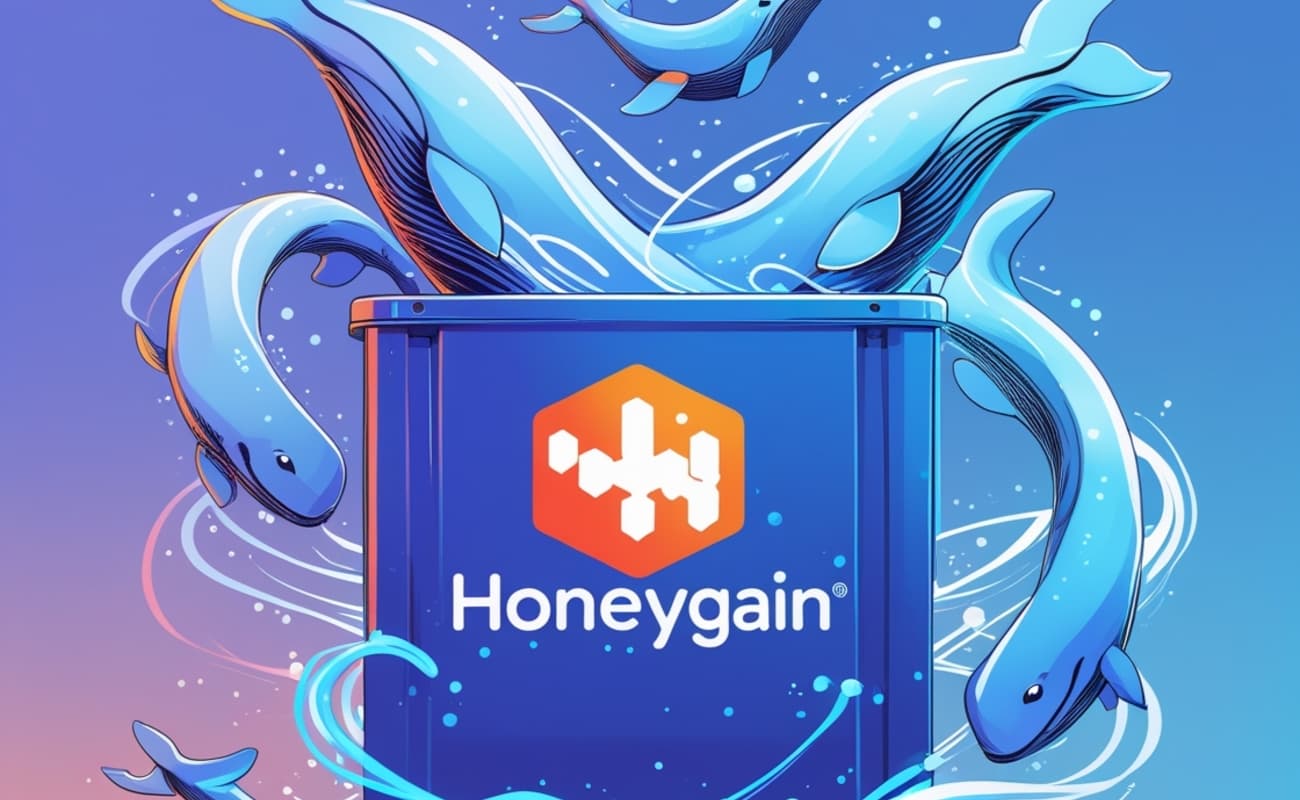If you’re looking for a reliable method to boost your passive income while leveraging the latest in virtualization technology, then running Honeygain in a containerized environment might be exactly what you need. In this guide, we’ll dive into the world of honeygain docker setups, exploring technical advantages such as 24/7 operation without dependence on physical hardware as well as discussing some of the challenges like networking configurations and hardware access limitations.
Before we get started, feel free to check out our related article on the honeygain bonus code for additional tips on maximizing your earnings!
Introduction to Honeygain in a Docker Environment
The idea behind deploying Honeygain Docker instances is not just about isolating the application from your main operating system but also about ensuring that you can run the service 24/7 with improved resource control. Many developers and tech enthusiasts have embraced this Honeygain Docker approach due to Docker’s ability to manage resources more efficiently than traditional setups. By encapsulating Honeygain into a Honeygain Docker container, you get a neat, manageable application that can be easily migrated or replicated across multiple virtual environments.
Key Technical Advantages and Challenges
Utilizing a Honeygain Docker container comes with a suite of benefits:
First, there is the ability to run the Honeygain Docker application continuously without relying on physical hardware, which is a significant win for power management and cost efficiency. Also, resource management—specifically CPU and RAM usage—becomes much more predictable when using Honeygain Docker. However, no setup is perfect, and you might face challenges, especially regarding network configuration within the container or limitations in accessing certain hardware functionalities. These technical considerations are important, especially when you plan to scale your Honeygain Docker operation or deploy it on devices like the Raspberry Pi.
Understanding the Honeygain Docker Setup
Whether you’re a beginner or someone with extensive experience in DevOps, understanding the basics of container management is essential for working with Honeygain Docker. The Honeygain Docker image allows you to isolate the application in a controlled environment where updates and troubleshooting become far more manageable. The container image is optimized to run with minimal overhead by leveraging Docker’s inherent resource efficiency while isolating Honeygain Docker from other system processes.
Preparing Your Environment
Before setting up the application inside a container, ensure you have Docker installed on your system. Docker provides detailed documentation on their official website that you might find useful. Whether you’re on Windows, macOS, or Linux, following the installation guidelines meticulously will set the foundation for running your container smoothly. It’s crucial to review the prerequisites and make sure your system meets the required specifications.

Step-by-Step Guide to Setting Up Honeygain in Docker
Embarking on the containerization of Honeygain is an exciting journey that combines both the worlds of passive income and cutting-edge DevOps practices. The process starts with pulling a pre-built image of Honeygain from Docker Hub, configuring your container using docker-compose, and then optimizing the network settings to ensure smooth operation.
Firstly, the Docker image provided by the community has been refined to reduce resource consumption while maintaining the application’s stability. After pulling the image, you will need to modify the docker-compose file to suit your network and hardware environment. This includes mapping ports, setting environment variables, and defining resource limits (like CPU and RAM usage) that mirror your physical system’s capacity. Such configurations are typically dictated by your expected traffic or the scale at which you plan to run the service.
The process is straightforward if you carefully follow the provided instructions. Real development scenarios often require slight tweaks to these configurations to accommodate specific network settings. If troubleshooting becomes necessary—for instance, if you encounter network connectivity issues—it’s helpful to know that the community has shared a variety of tips online, including ways to overcome the infamous honeygain docker troubleshoot installation challenges.
Technical Insights: Resource Management & Networking in Docker
Running Honeygain in a Docker container introduces unique aspects of resource management that the traditional installation might lack. Docker’s inherent ability to monitor and limit CPU, memory, and network resources is a significant advantage for those who want better control over their system’s performance. Additionally, Docker containers can be replicated and distributed with relative ease, allowing you to set up redundant systems for increased reliability.
However, there are challenges as well. Configuring your container to ensure a persistent network connection can be tricky. Network settings within the container must be fine-tuned, primarily if you use complex architectures like virtual private networks (VPNs) or if you’re deploying the container on platforms with unconventional network interfaces. For those who capitalize on running Honeygain within Docker, understanding these intricacies is essential to fully benefit from the containerization approach.
User Experience and Practical Considerations
From real user experiences, it’s been observed that the CPU and RAM utilization for the Docker setup is generally more stable compared to traditional installations. Users often report a reduction in errors related to overheating or resource overuse, thanks to Docker’s sandboxing capabilities. That said, some might encounter a few hiccups during the initial network configuration phase. Have you ever wondered how to troubleshoot these issues effectively? Essentially, the process involves delving into Docker logs, verifying volume mappings, and checking for port conflicts. For anyone to ensure the system remains on 24/7 operation without unnecessary downtime, a little patience and methodical troubleshooting are necessary.
For enthusiasts using alternative hardware like the Raspberry Pi, a common query is whether you can run Honeygain on such a device without Docker. Interestingly, while it is possible to run Honeygain natively on a Raspberry Pi, containerizing it often provides smoother resource management and easier updates. This brings us to practical tips and direct feedback from developers who have tested both methods extensively.

Comparative Analysis: Traditional vs. Dockerized Honeygain
It’s always helpful to compare the Dockerized approach with the conventional installation. Below is a table that summarizes some key differences between these two methods:
| Aspect | Traditional Setup | Docker Setup |
|---|---|---|
| Resource Management | Directly tied to the physical machine; less flexibility | Controlled CPU/RAM usage; dynamic scaling |
| Installation & Updates | Manual downloads and installations | Automated deployments using docker-compose |
| Network Configuration | Native network interface; straightforward | Requires port mapping and advanced configurations |
| System Isolation | Runs on the host OS; potential conflicts | Sandboxed environment reducing conflict risks |
Advanced Troubleshooting and Optimization Tips
Even if Docker simplifies many aspects of the installation, it’s not entirely immune to issues. Problems such as Honeygain Docker device limit or unexplained connectivity losses can occur. In such cases, checking Docker logs and revisiting the configuration file will often reveal the underlying issue. Optimizing the docker-compose file to match your network infrastructure and ensuring that any external firewalls or VPNs are appropriately configured is critical. This proactive approach not only reduces downtime but also enhances the overall security of your application.
Moreover, if you are trying to run Honeygain in an environment with minimal hardware, like a Raspberry Pi, troubleshooting might include additional steps. For example, verifying whether the limited resources provided by such hardware interfere with Docker’s resource allocations is key. Many community members have shared insights on how to mitigate these challenges, making it essential to stay updated with the latest discussions on forums and developer communities.
Experience-Based Insights and Final Thoughts
As someone who has experimented with both traditional installations and containerized deployments, I can safely say that the benefits of a honeygain docker approach are substantial. Not only do you get a more resilient system, but you also have the flexibility to experiment with multiple deployment scenarios. Have you ever thought about the scalability advantages when Docker becomes the backbone of your services? The ability to scale and migrate containers seamlessly is something that many of us in the DevOps field have come to rely on.
After weighing the pros and cons, it’s clear that the Dockerized approach offers a modern, efficient solution for developers and enthusiasts aiming to maximize passive income without being tied down by physical hardware restraints. By following this guide, you can efficiently set up, optimize, and troubleshoot your Honeygain instance, ensuring it runs smoothly 24/7.
FAQ
What is the Honeygain Docker device limit?
The Honeygain Docker setup may impose device limits depending on how resources are allocated within the container environment. In many cases, this limit is configurable via your docker-compose file by adjusting CPU and memory limits. If you experience restrictions, reconfiguring these settings or consulting Docker’s resource management documentation can help.
How do I troubleshoot Honeygain Docker installation issues?
If you face installation challenges while setting up Honeygain in Docker, start by checking the container logs for any error messages. Common issues often include network misconfigurations or conflicts with existing ports. It might be helpful to compare your settings with community-shared examples or consult Docker’s troubleshooting guides for a detailed solution.
Can I run Honeygain on Raspberry Pi without Docker?
Yes, you can run Honeygain directly on a Raspberry Pi without using Docker. However, running it in a containerized environment often provides better resource management and isolation, ensuring that the application runs smoother, especially during extended periods of operation.
Are there any specific network settings required for Dockerized Honeygain?
Absolutely. When using Docker for Honeygain, proper port mapping and environment variables are essential for a stable connection. It’s advisable to review your network configuration settings and ensure that your host system and Docker container communicate effectively.
What are some best practices for optimizing CPU/RAM consumption in a Honeygain Docker setup?
Optimization largely involves fine-tuning your docker-compose configurations and setting appropriate resource limits. Monitoring tools and community feedback can also guide you in adjusting these limits as your usage patterns evolve over time.
For more advanced tips and insights on maximizing your earnings, be sure to explore additional resources on our website and check out our in-depth article on the honeygain bonus code strategy.
Happy containerizing and here’s to your passive income success!
